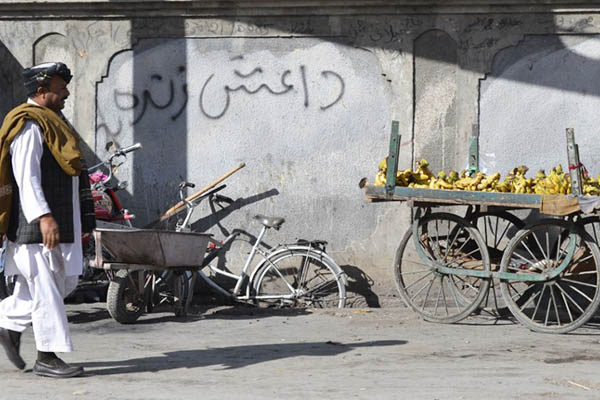
Banaras Khan—AFP
Pentagon says Hafiz Saeed Khan was killed in airstrike last month.
The Islamic State group’s leader in Afghanistan and Pakistan, Hafiz Saeed Khan, was killed last month in an airstrike in Nangarhar province, the Pentagon said on Friday.
Khan was named head of I.S.’s “Khorasan province,” which includes Afghanistan, Pakistan and parts of neighboring countries, early last year when a group of Pakistani Taliban switched allegiance to the jihadist group.
Pentagon deputy press secretary Gordon Trowbridge said the strike came while U.S. and Afghan special operations forces carried out counter-I.S. operations in southern Nangarhar province throughout July. “During this time, U.S. forces conducted an airstrike targeting Hafiz Saeed Khan, the Islamic State in the Levant-Khorasan emir, in Achin district, Nangarhar province July 26, resulting in his death,” Trowbridge said.
Khan “was known to directly participate in attacks against U.S. and coalition forces, and the actions of his network terrorized Afghans, especially in Nangarhar,” he added.
Details of the strike were not immediately available, but a U.S. official told the BBC that Khan was killed by a drone strike.
The death of Khan represents a major setback for the I.S. group as it tries to establish itself as a serious force in Pakistan and Afghanistan. Afghan authorities erroneously believed Khan had been killed in another strike in July 2015, when a U.S. drone targeted dozens of I.S.-linked cadres in restive Nangarhar province, close to the Pakistani border.
That attack came less than six months after another strike in Afghanistan killed Abdul Rauf Khadim, who was thought to be the I.S. number two in the country.
Some Afghan Taliban members have defected to the jihadist group, with insurgents apparently adopting the black I.S. flag to rebrand themselves as a more lethal force.
Most NATO combat troops who had been fighting the Taliban and other insurgent groups have now left Afghanistan, with responsibility for the country’s security switching to local forces. The Afghan troops, however, still rely on U.S. air support and training and have struggled to stem frequent Taliban offensives.
Former Taliban leader Mullah Akhtar Mansour was killed in a U.S. drone strike inside Pakistan in May.
I.S. has been trying to expand its presence beyond its so-called “caliphate” in Iraq and Syria, where tens of thousands of jihadists have been killed in airstrikes and offensives, but has made only limited progress.
